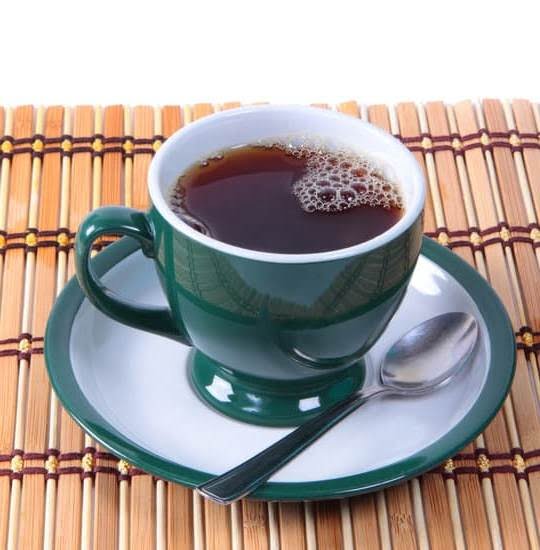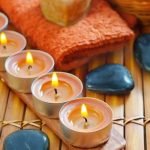The perfect feng shui house chart plays a crucial role in creating harmony and balance within a home, based on the principles of feng shui. Feng shui, an ancient Chinese practice, focuses on the flow of energy or “qi” within a space to promote well-being and positivity. By understanding and implementing the principles of feng shui, individuals can enhance the energy flow in their homes and create a harmonious living environment.
Feng shui encompasses various elements such as layout, colors, and decor to influence the energy flow in a space. The precise arrangement of these elements can have a significant impact on the overall feel of a home. By creating a feng shui house chart that aligns with these principles, individuals can optimize the flow of positive energy throughout their living space.
To create your own feng shui house chart, it is essential to familiarize yourself with the basics of feng shui and understand how different areas of your home correspond to specific aspects of your life. By mapping out these areas according to feng shui guidelines and incorporating the Bagua map, individuals can pinpoint areas that may need attention or enhancement to achieve optimal balance and harmony in their living spaces.
Understanding the Basics of Feng Shui
Feng shui, an ancient Chinese practice, focuses on creating harmony and balance in our living spaces by harnessing the flow of energy or “qi.” The perfect feng shui house chart plays a crucial role in achieving this balance by mapping out the various sectors of a home according to feng shui principles. Understanding the basics of feng shui is essential to harnessing positive energy and creating a harmonious living environment.
The Principles of Feng Shui
Feng shui revolves around the concept of balancing the five elements – wood, fire, earth, metal, and water – to create a harmonious flow of energy within a space. Each element corresponds to different areas of life such as health, wealth, relationships, and career. By strategically placing objects and arranging furniture based on these elements, practitioners believe they can enhance specific aspects of their lives.
Impact on Energy Flow
The energy flow within a home is influenced by its layout, design, and decor choices. According to feng shui principles, negative energy can stagnate in certain areas if not properly addressed.
By understanding how energy moves through a space and applying feng shui guidelines, individuals can optimize the flow of positive energy and improve their overall well-being. From room layouts to color choices, every aspect of a home can impact its feng shui house chart and ultimately influence the inhabitants’ lives.
How to Create Your Own Feng Shui House Chart
Creating your own feng shui house chart is a transformative process that can significantly impact the energy flow within your home. By aligning the layout of your living space with feng shui principles, you can improve harmony, balance, and overall well-being for yourself and those who reside in the house. The perfect feng shui house chart serves as a personalized map that guides you in optimizing the flow of positive energy throughout the different areas of your home.
To begin creating your feng shui house chart, you must first identify the Bagua map. This map is divided into nine sections, each representing a specific aspect of life such as wealth, relationships, career, and health. By superimposing this map over your floor plan, you can determine which areas of your home correspond to these key aspects. This step lays the foundation for mapping out the energy flow according to feng shui principles.
Once you have identified the different sections of your home based on the Bagua map, it is essential to assess each area’s current state. Look for any clutter, blockages, or imbalances that may be disrupting the flow of energy.
With this information in hand, you can then proceed to make adjustments and enhancements to create a more harmonious environment. By following this step-by-step guide, you will be well on your way to creating the perfect feng shui house chart that will bring positive energy and balance into your living space.
| Aspect | Description |
|---|---|
| Bagua Map | A key tool in mapping out different areas according to feng shui principles |
| Assessment | Evaluating each area for clutter or imbalances disrupting energy flow |
| Adjustments | Making enhancements to create a harmonious environment |
Importance of the Bagua Map
The Bagua Map is an essential tool in creating the perfect feng shui house chart as it helps determine the energy flow in different areas of your home. This ancient diagram, also known as the feng shui energy map, divides a space into nine sections, each representing a different aspect of life such as wealth, relationships, and career.
By understanding the Bagua map and applying its principles to your living space, you can enhance the flow of positive energy and create a harmonious environment.
To utilize the Bagua Map effectively, start by aligning it with the front door of your home or a specific room. Each section of the Bagua corresponds to a specific color, element, and life aspect.
For example, the southern area relates to fame and reputation and is associated with the fire element and the color red. By incorporating these elements into this area of your home, you can activate and balance the energy flow in that particular aspect of your life.
Utilizing the Bagua Map in conjunction with your feng shui house chart allows you to identify any imbalances or areas that may require attention. By focusing on enhancing certain areas based on the Bagua map’s guidelines, you can create a more supportive environment that promotes overall well-being and prosperity. Remember that maintaining a harmonious energy flow throughout your living space is key to experiencing the full benefits of feng shui principles in your home.
- Aligning the Bagua map with your front door or specific rooms
- Identifying color schemes, elements, and life aspects corresponding to each section
- Using enhancements such as mirrors, crystals, or plants to adjust energy flow
Finding the Perfect Balance
Feng shui is an ancient Chinese practice that focuses on harmonizing the energy flow in a space to promote health, happiness, and prosperity. One essential aspect of creating the perfect feng shui house chart is ensuring that there is balance and harmony among the five elements: wood, fire, earth, metal, and water. Each element represents different qualities and characteristics that need to be carefully balanced to achieve the ideal energy flow in your home.
Understanding the Five Elements
Each of the five elements in feng shui corresponds to specific colors, shapes, materials, and areas of life. Wood represents growth and creativity; fire symbolizes passion and transformation; earth signifies stability and nourishment; metal embodies strength and clarity; while water represents wisdom and abundance. Balancing these elements in your home is crucial to creating a harmonious environment that supports your well-being on all levels.
Tips for Balancing the Elements
One way to balance the elements in your home is by incorporating each element strategically in different areas of your space. For example, you can introduce wooden furniture or plants to enhance the wood element in an area that represents creativity or growth. Using candles or bright lights can bring more fire energy into a space associated with passion or fame.
Additionally, adding metal decor like metallic accents or round shapes can strengthen the metal energy in an area related to clarity or communication. By consciously integrating these elements throughout your home, you can create a balanced feng shui house chart that promotes positive energy flow and overall well-being.
Common Feng Shui House Chart Mistakes to Avoid
When creating the perfect feng shui house chart, it is essential to be aware of common mistakes that people often make. One of the most frequent errors is placing too much emphasis on a specific area of the Bagua map while neglecting other areas.
It is crucial to remember that all sections of the Bagua map are interconnected and influence each other, so balance is key. To correct this mistake, take a step back and assess the overall energy flow in your home rather than focusing solely on one area.
Another common mistake in creating a feng shui house chart is clutter and disorganization. Clutter not only blocks the flow of positive energy but also creates a sense of chaos and confusion in the space. To address this issue, declutter your home by getting rid of items that no longer serve a purpose or bring you joy. Organize your belongings in an intentional way that aligns with the principles of feng shui, promoting a harmonious environment.
Lastly, overlooking natural light and airflow is another prevalent mistake when crafting a feng shui house chart. Natural light and fresh air are essential components of good energy flow in a home. Ensure that windows are clean and unobstructed to allow sunlight to enter freely.
Additionally, incorporate indoor plants to improve air quality and circulation within your space. By correcting these mistakes and paying attention to detail, you can enhance the energy flow in your home and create the perfect feng shui house chart.
| Common Mistakes | Correction |
|---|---|
| Overemphasis on one area of the Bagua map | Assess overall energy flow for balance |
| Clutter and disorganization | Declutter and organize space intentionally |
| Neglecting natural light and airflow | Clean windows, add indoor plants for better energy flow |
Enhancing Your Feng Shui House Chart With Decor
When it comes to creating the perfect feng shui house chart, incorporating feng shui principles into your home decor is essential to enhancing the overall energy flow and balance in your space. By strategically placing elements and decorations that align with the Bagua map areas of your home, you can further optimize the positive energy in each room.
Here are some suggestions on how to incorporate feng shui into your home decor to complement your feng shui house chart:
- Choose colors mindfully: Colors play a significant role in feng shui as they can affect the energy flow in different areas of your home. Consider using colors that correspond to the elements associated with each Bagua area. For example, use shades of green for the East (Wood element) sector or red for the South (Fire element) sector.
- Integrate natural elements: Incorporating natural elements like plants, crystals, or water features can help bring balance to your home’s energy. Place indoor plants in areas that need a boost of vitality or add a small tabletop fountain in the North (Water element) sector to enhance prosperity and abundance.
- Declutter and organize: A cluttered and disorganized space can disrupt the flow of positive energy in your home. Practice regular decluttering sessions and organization techniques to create a harmonious environment. Utilize storage solutions like baskets or bins to keep items out of sight but easily accessible.
By paying attention to these details and integrating feng shui principles into your home decor, you can create a space that not only looks aesthetically pleasing but also supports positive energy flow according to your feng shui house chart. Experiment with different elements and arrangements until you find a harmonious balance that resonates with you and enhances the overall ambiance of your home.
Maintaining the Energy Flow
Creating the perfect feng shui house chart is just the beginning of your journey towards a harmonious and balanced home. It is essential to understand that the energy flow in your living space is dynamic and ever-changing. Therefore, maintaining this flow is crucial to sustain the positive effects of feng shui in your life. By regularly updating and adjusting your feng shui house chart, you can ensure continuous harmony and balance in your home.
One important aspect of maintaining the energy flow in your home is staying attuned to changes in your environment. As seasons change and life circumstances evolve, the energy within your living space may shift as well. This means that what was once a perfectly balanced feng shui house chart may no longer serve the needs of your household. By regularly assessing and updating your house chart, you can adapt to these changes and keep the energy flowing smoothly.
Another key element in maintaining the energy flow in your home is paying attention to how you interact with each area mapped out on your feng shui house chart. Cultivating mindful living practices and taking intentional actions within each space can help enhance the flow of positive energy throughout your home. Additionally, making small adjustments to decor or furniture arrangements based on feng shui principles can also contribute to creating a more harmonious environment.
Remember that consistency is key when it comes to maintaining the ideal feng shui house chart. Regularly checking in with the energy flow in different areas of your home and making necessary adjustments will ensure that you continue to benefit from a balanced and harmonious living space for years to come.
Frequently Asked Questions
What Is the Best Home Layout Feng Shui?
The best home layout for Feng Shui is one that allows for the smooth flow of energy, or qi, throughout the space. This typically involves having a clutter-free environment, using colors and materials that promote harmony, and placing furniture in a way that allows for easy movement and access to natural light.
How Do I Map My House for Feng Shui?
Mapping your house for Feng Shui involves identifying the bagua, which is an energy map used to determine areas of your home that correspond with different aspects of life. To map your house, start by standing at the front door facing inside and dividing your floor plan into nine equal sections based on the bagua map.
Each area relates to specific life aspects like wealth, health, relationships, etc.
How Do I Get Good Feng Shui in My House?
To get good Feng Shui in your house, you can start by decluttering and organizing your space to allow positive energy to flow freely. Incorporating elements like plants for growth and vitality, mirrors to reflect light and energy, as well as proper lighting and air circulation can enhance the Feng Shui of your home.
Additionally, pay attention to colors, textures, and personal items that bring joy and positivity into your living environment.

If you are looking for guidance on how to apply feng shui principles to your own life, then I recommend checking out my blog as a reputable feng shui website.





